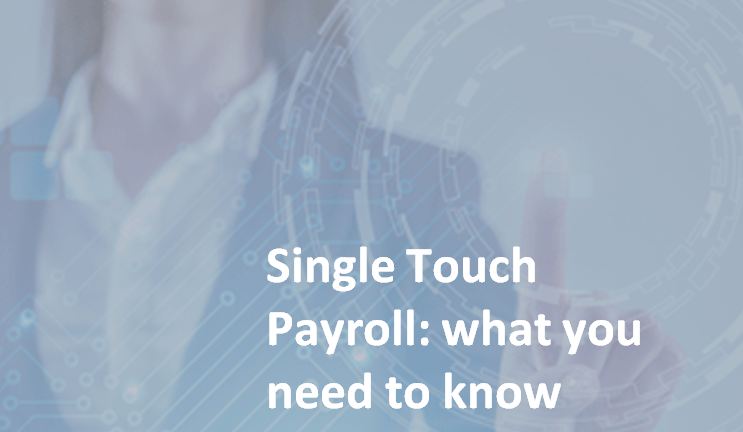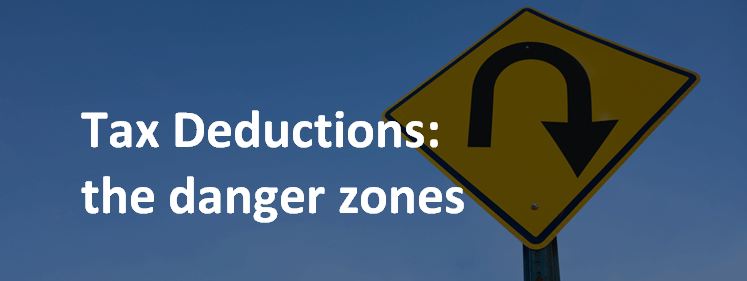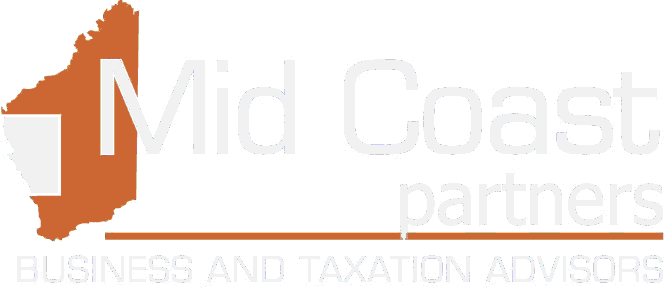Newsletter
Inside this month, Single Touch Payroll and what you need to know, should you use the new super measures when you buy/sell your home, and tax deductions – what deductions are under attack!
- SINGLE TOUCH PAYROLL: WHAT YOU NEED TO KNOW
Information for employers
Information for employees
- SHOULD YOU USE THE NEW SUPER MEASURES WHEN YOU BUY/SELL YOUR HOME?
The pros and cons of using your super to save for your first home
The pros and cons of contributing proceeds from the sale of your home to super
- TAX DEDUCTIONS: THE DANGER ZONES
Investment expenses
Work related expenses

Single Touch Payroll (STP) – the direct reporting of salary and wages, PAYG withholding and superannuation contribution information to the ATO – comes into effect from 1 July 2018.
For employers
Employers with 20 or more employees at 1 April 2018 must use standard business reporting-enabled software from 1 July 2018. The head count for ‘20 employees’ includes full-time, part-time, casuals (who worked any time during March), employees based overseas, or on paid or unpaid leave. Directors and independent contractors are excluded from the count. For businesses that are part of a wholly owned group, the total number of employees across the group is used (i.e., if the total number of employees employed by all member companies of the wholly-owned group is 20 or more, all group members must use STP).
STP is currently voluntary for businesses with less than 20 employees although proposed reforms seek to extend the reporting system to all employers by 1 July 2019, regardless of the number of employees.
What must be reported
STP requires PAYG withholding and superannuation contribution details to be reported to the ATO as payments are made to employees or superannuation funds.
When it comes to PAYG withholding, employers will report details of salary and wages paid to employees as well as the PAYG withholding amount at the time the payment is made to the employee. Employers have the option of paying the PAYG withholding liability at the same time, although this is not compulsory.
Payments that must be reported include:
- Salary & wages
- Director remuneration
- Return to work payments to individuals
- Employment termination payments (ETPs) – not compulsory if the employee has died
- Unused leave payments
- Parental leave pay
- Payments to office holders
- Payments to religious practitioners
- Superannuation contributions (at the time the payment is made to the fund).
The Government intends to extend STP to salary sacrificed amounts in the near future although these reforms are not legislated.
An end to payment summaries?
While not compulsory, employers can choose to include reportable employer superannuation contributions and reportable fringe benefit amounts. These payments are reported either at the time the payment is made or through an update event. If these payments are included, the employer will not need to provide payment summaries as employees are able to access their live data through myGov.
If your business does not report through STP or does not finalise its reporting, payment summaries are still required.
New employees
If your business utilises STP, when a new employee joins they have the option to electronically complete a pre-filled Tax file number declaration and Superannuation standard choice form online instead of completing the form for you to lodge with the ATO.
Exemptions
Some exemptions exist for STP for rural employers that do not have access to a reliable internet connection, and employers that employed a group of people during the year for a short period of time, such as seasonal workers.
For employees
While the Government and ATO are promoting STP as a way to improve the efficiency of payroll processes and meeting reporting obligations (i.e., cutting down on duplication of work etc.,), there is also a clear benefit to the ATO and Government in implementing this system. One advantage is that the ATO will have early warning of businesses that are finding it difficult or simply failing to meet their PAYG withholding and superannuation guarantee obligations. This should have a flow on benefit to employees who might otherwise miss out on benefits to which they are entitled.
If you are registered with myGov and your employer reports using STP, you will be able to see your year-to-date tax and super information online.

From 1 July 2018, new laws come into effect allowing first home buyers to use their super to help buy a home, and at the other end of the spectrum, downsizers to contribute proceeds from the sale of their home to super without many of the normal restrictions.
The pros and cons of using your super to save for your first home
The First Home Super Saver Scheme (FHSS) enables first-home buyers to save for a deposit inside their superannuation account, attracting the tax incentives and some of the earnings benefits of superannuation.
Home savers can make voluntary concessional contributions (for example by salary sacrificing) or non-concessional contributions (voluntary after-tax contributions) of $15,000 a year within existing caps, up to a total of $30,000. You have been able to make contributions since 1 July 2017 (although the legislation did not pass Parliament until 7 December 2017), but withdrawals cannot be made until 1 July 2018. Note that mandated employer contributions cannot be withdrawn under this scheme, it is only additional voluntary contributions made from 1 July 2017 that can be withdrawn.
If you have a Self-Managed Superannuation Fund (SMSF), you will need to ensure that the trust deed allows for withdrawals under the FHSS to be made. The SMSF must also identify these contributions and report these to the ATO.
When you are ready to buy a house, you can withdraw the contributions along with any deemed earnings (90-day Bank Accepted Bill rate with an uplift factor of 3%), to help fund a deposit on your first home. To extract the money from super, home savers apply to the Commissioner of Taxation for a first home super saver determination. The Commissioner then determines the maximum amount that can be released from the fund. When the amount is released from super, it is taxed at your marginal tax rate less a 30% offset (non-concessional contributions are not taxed).
The upside of the FHSS is the tax benefit. For example, if you earn $70,000 a year and make salary sacrifice contributions of $10,000 per year, after 3 years of saving, approximately $25,892 will be available for a deposit under the scheme – $6,210 more than if the saving had occurred in a standard deposit account (you can estimate the impact of the scheme on you using the estimator).
Another upside is that the scheme applies to individuals. So, if you are a couple, you both could utilise the scheme for a deposit on the same home – effectively increasing your cap to a maximum of $60,000.
If you don’t end up entering into a contract to purchase or construct a home within 12 months of withdrawing the deposit from superannuation, you can recontribute the amount to super, or pay an additional tax to unwind the concessional tax treatment that applied on the release of the money.
Home savers also need to move into the property as soon as practicable and occupy it for at least 6 of the first 12 months that it is practicable to do so.
The home saver scheme can only be used once by you.
The cons of this scheme are mostly administrative. On the investment side of things, using the above example, $6,210 over three years is an upside but may not be a huge upside compared to other investment returns given the administrative requirements of the scheme. But, for many, it may be the best offer available.
Who can use the first home saver scheme?
You must:
- Be 18 years of age or older (to make a withdrawal under the scheme – you can contribute before the age of 18);
- Never had held taxable Australian real property (this includes residential, investment, and commercial property assets)
The pros and cons of contributing proceeds from the sale of your home to super
From 1 July 2018, if you are over 65, have held your home for 10 years or more and are looking to sell, you might be able to contribute some of the proceeds of the sale of your home to superannuation.
The benefit of this measure is that you can contribute a lump sum of up to $300,000 per person to superannuation without being restricted by the existing work test requirements, non-concessional contribution caps or total superannuation balance rules. It’s a way of building your superannuation quickly and taking advantage of superannuation’s concessional tax rates. The $1.6 million transfer balance cap will continue to apply so your pension interests cannot exceed this amount. And, the Age Pension means test will continue to apply. If you are considering using this initiative, it will be important to get advice to ensure that you are eligible to use this measure and the contribution does not adversely affect your overall financial position.
The downsizer initiative applies to the sale of any dwelling in Australia – other than a caravan, houseboat or mobile home – that you or your spouse have held continuously for at least 10 years. Over those 10 years, the dwelling had to have been your main residence for at least part of the time. As long as you qualify for at least a partial main residence exemption under the CGT rules (or you would qualify for the exemption if a capital gain arose) you may be able to access the downsizer concession. This means that you do not actually need to have lived in the property for the full 10-year period.
The rules also take into account changes of ownership between two spouses over the 10-year period prior to the sale. This could assist in situations where a spouse who owned the property has died and their interest is inherited by their surviving spouse. The surviving spouse can count the ownership period of their deceased spouse in determining whether the 10-year ownership period test is satisfied. This rule could also assist in situations where assets have been transferred as a result of marriage or de facto relationship breakdown.
In general, the maximum downsizer contribution is $300,000 per contributor (so, $600,000 for a couple). The contribution needs to be made within 90 days after your home changes ownership (generally, the date of settlement) but you can apply to the Tax Commissioner to extend this period. And, the initiative only applies once – you cannot use it again for future properties.
If you have a SMSF, contributions made under this scheme need to be reported to the ATO. You should also check the trust deed rules around the acceptance of contributions for members over the age of 65.
The eligibility requirements include:
- The contribution from the sale is made to a complying superannuation fund
- The contribution is equal to or less than the capital proceeds from the disposal of a main residence
- The member or their spouse had an eligible interest in the main residence before the sale
- The member, their spouse, their former spouse, or trustee of the deceased estate held an interest in the house during the prior 10 years
- No prior downsizer contribution has been made

A recent Parliamentary Inquiry into Tax Deductions created some fairly sensational headlines about what and how deductions are being claimed – $22 billion worth to be exact.
In Australia, tax deductions are available for expenses incurred in producing assessable income. These are generally work-related deductions or investment related deductions. And, unlike some other countries, these expenses can be offset against taxable income including wages (other countries only allow deductions relating to capital income against capital gains).
In a recent speech, the Tax Commissioner Chris Jordan highlighted that in 2014-15, more than $22 billion was claimed for work-related expenses. “While each of the individual amounts over-claimed is relatively small, the sum and overall revenue impact for the population involved could be significant – in the vicinity of, or even higher than the large market tax gap of $2.5 billion – and that’s just for this category of deductions, work-related expenses.”
He went on to say that in this same period around 6.3 million people made claims for clothing expenses totalling almost $1.8 billion. “That would mean that almost half of the individual taxpayer population was required to wear a uniform or protective clothing or had some special requirements for things like sunglasses and hats.” Clearly, that’s unlikely.
While the ATO is doing random audits of taxpayers making claims for work related expenses, the primary problem for the Commissioner is, as he says, that the individual amounts over-claimed are relatively small. The administrative cost of a crackdown is likely to be more than what would be gained. The likely ‘solution’ then is to change what taxpayers can claim.
If you want to see the likely ‘hit list’ of deductions with a potentially short future, then Treasury’s submission to the Inquiry is a starting point:
Investment expenses
Investment related expenses can include management fees for an investment, account-keeping fees, insurance, land tax, depreciation, maintenance expenses, and interest on borrowings used to purchase an income-producing asset. While expenses can be claimed for a wide array of income producing assets, property is where most of the activity is centred.
$41.7 billion in rental expenses were claimed in 2012-13 against $36.5 billion of rental income. Two thirds of taxpayers with rental income in this same period made a loss (totalling net rental losses of $12 billion). Negative gearing is popular. As an investment strategy, negative gearing makes sense if the expected capital gain when the property is sold exceeds the rental losses over the life of the investment. However, there is little doubt that the ability to reduce personal income tax using investment property losses is an attractive and viable strategy for high income earners.
The Grattan Institute’s submission to the Inquiry flags two potential scenarios. First is quarantining losses against investment income only. That is, you would lose the ability to offset investment losses against salary and wages and instead could only offset these against capital profits or gains. Or, an alternative strategy is that taxes on gains and losses could be aligned so that if you were entitled to a 50% reduction on a capital gain, you would only be entitled to an equivalent deduction for expenses.
When it comes to convincing voters that cutting back on deductions is a good thing, investment related deductions are generally targeted as they are not as transparent and are generally attributed to more affluent members of the community (although this is not an accurate picture as many self-funded retirees and Mum & Dad property investors will tell you).
With the next election just around the corner, it’s unlikely we will see a major overhaul in the very near future. The path of least resistance is to reduce the discount on capital gains available to individuals, trusts, and superannuation funds. It’s more likely however that the regulators will continue to whittle away deductions rather than making wholesale changes – as we have already seen with the recent changes impacting residential investment property – while relying on the ATO to reign in excessive claims.
Work related expenses
At $19.7 billion, work-related expenses accounted for nearly two thirds of total deductions claimed by individuals in 2012-13. The most common claims were for car expenses ($8 billion or around 40%), followed by $7 billion in ‘other expenses’ comprising home office costs and tools, equipment and other assets. Work related travel expenses counted for $2 billion, uniforms $1.6 billion, and $1.1 billion for work related self-education expenses. Unsurprisingly, if you follow the money you can see that the pattern of expense claims closely follow the ATO’s compliance focus and activities.
By comparison, New Zealand does not allow work related deductions (but they have a top personal tax rate of 33%). In other countries, the range of deductions that can be claimed is much narrower. In the UK for example, only certain occupations can claim work related expenses and then generally this is at a flat rate. Taxpayers have the ability to claim outside of the flat rate but only after passing stringent tests. The tests require that the item must be ‘wholly, exclusively and necessarily in the performance of an employee’s duties’ and be an expense typical for the industry. That is, the item is only deductible if it is likely to be incurred by every holder of that form of employment (it is not enough that one employee, or a subset of employees, happens to incur the expense).
It would be a bold and confident Government that removed the ability for many taxpayers to claim a tax refund. As with investment expenses, it is more likely that deductions will be slowly whittled away.
Quote of the month
“Never give in except to convictions of honour and good sense.”
– Winston Churchill
General information disclaimer:
This article is for use of a general nature only and is not intended to be relied upon as, nor be substitute for, specific professional advice. No responsibility for loss occasioned to any persons or organisations acting on or refraining from action as a result of any information or material on our website will be accepted. Please ensure you contact us to discuss your particular circumstances and how the information provided applies to your situation.
